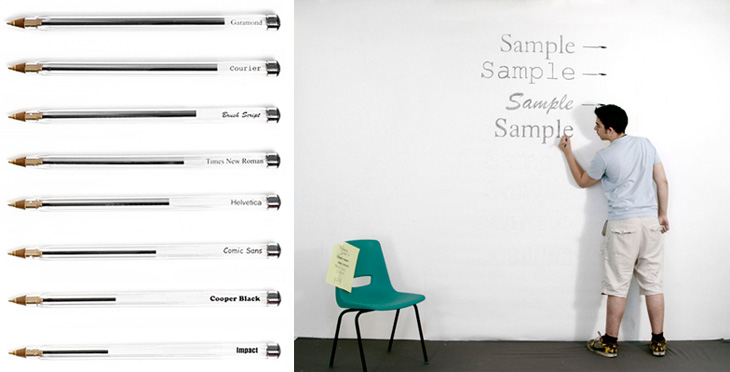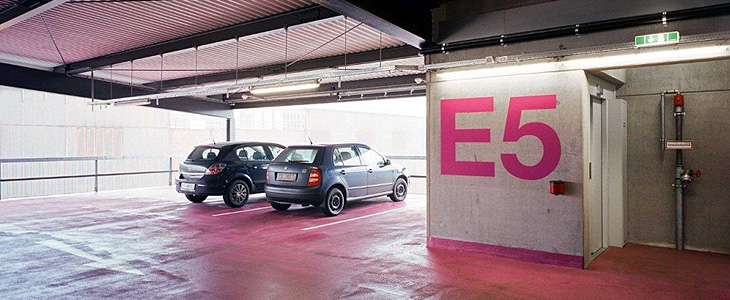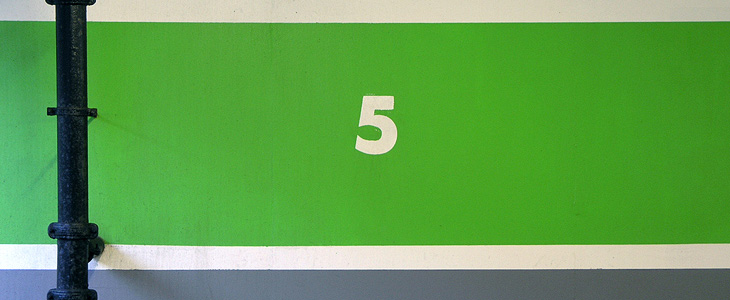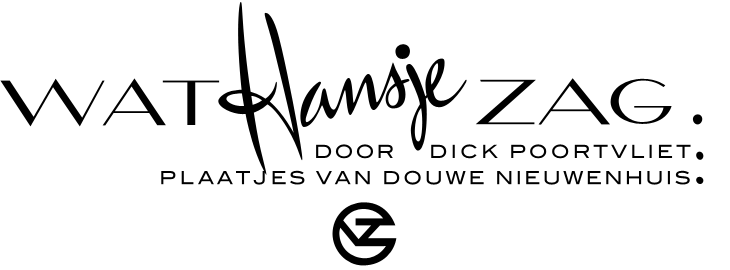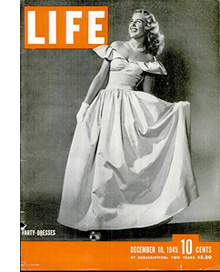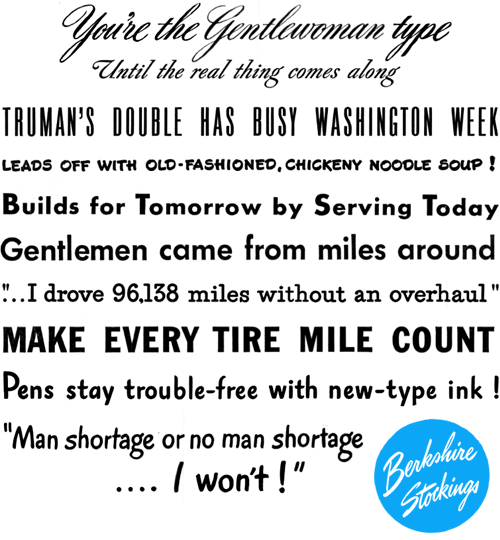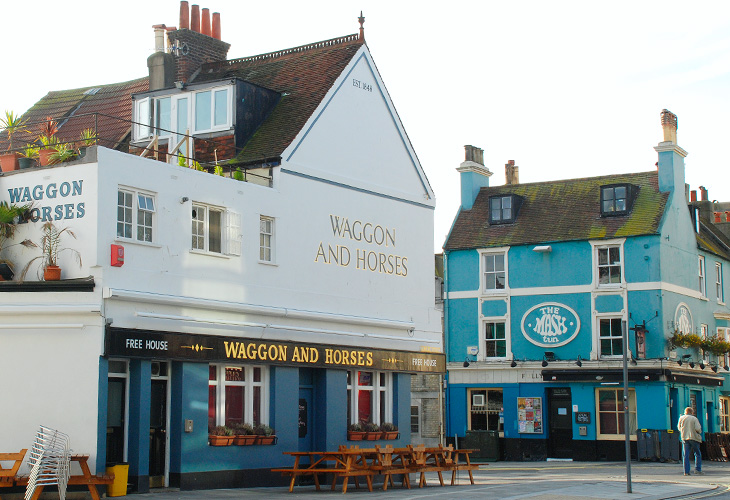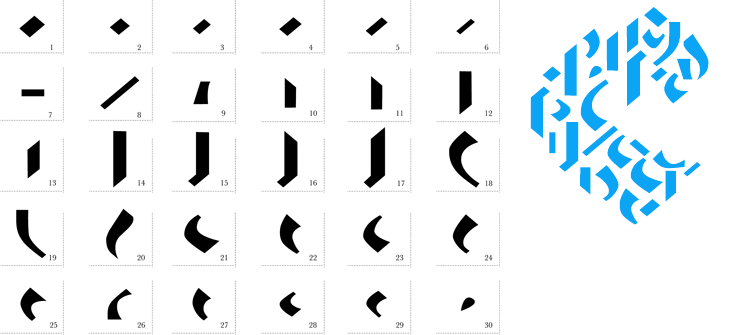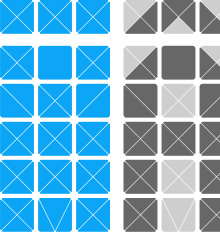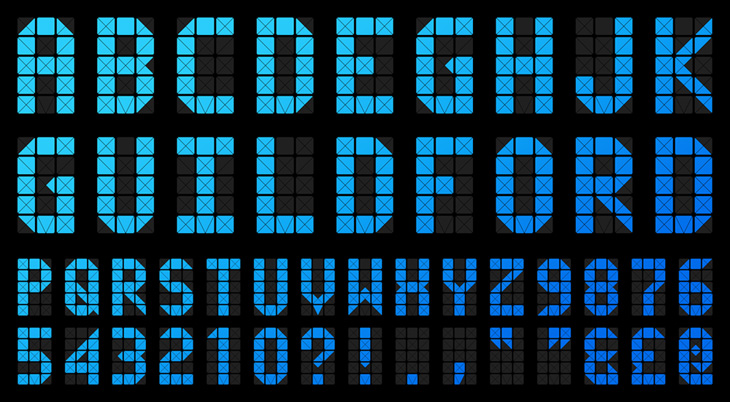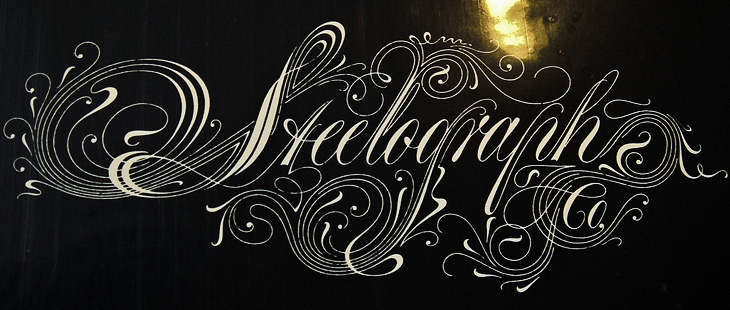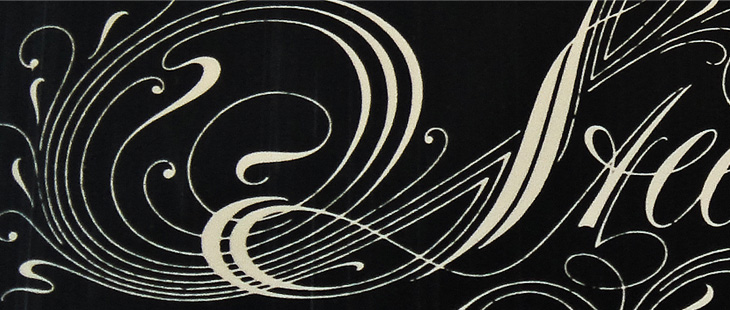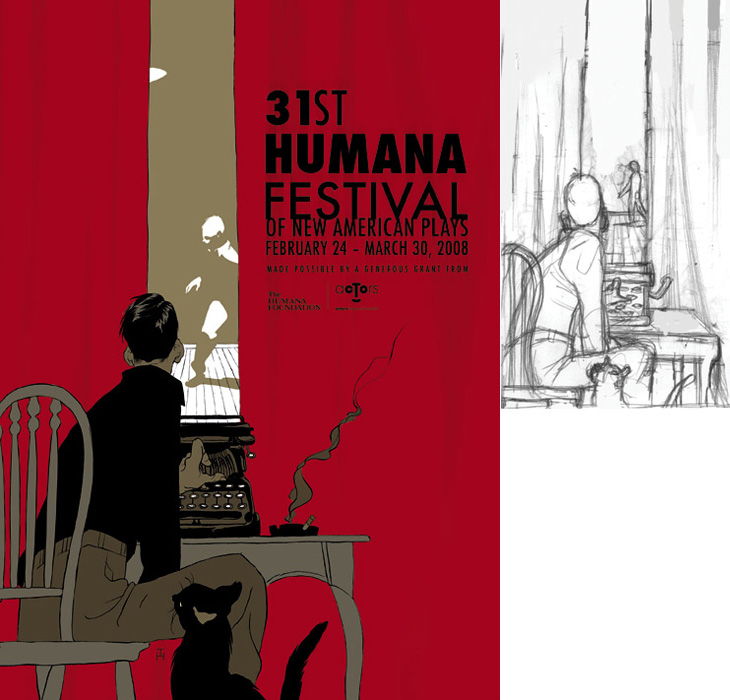I’m fascinated by the (mostly) Ohioan gravestones in this Flickr set by Tom Davie. Take a look, then have a look at these ghost signs, and you’ll notice how similar the lettering is. I’ve never seen gravestones lettered like this —any flamboyance I’d seen was kept to Celtic patterning or hideously overblown Victorian sentimentalist statuary; the lettering was universally rendered in a sombre, understated style, or at least an archaic one. Still, most of these stones look to date from the mid-19th Century, when commercial lettering like this was all the rage, and I can imagine that for many towns the best-qualified letterer was the same person who did the signpainting and advertising, so much of the style would have carried across. I wonder also whether people simply preferred to have their relatives’ gravestones done like this — who’d want a dull, plain bit of lettering when even a tin of Cocoa gets something far more ornate? What, didn’t you love Grandpa? It’s a theory anyway. The three at the bottom are all ones I’ve taken myself, all from the north of England, so you can see the style I’ve been used to.
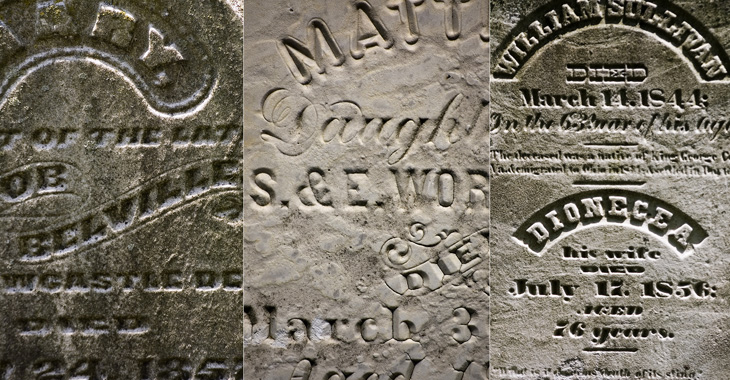
All images from this Flickr set by Tom Davie<
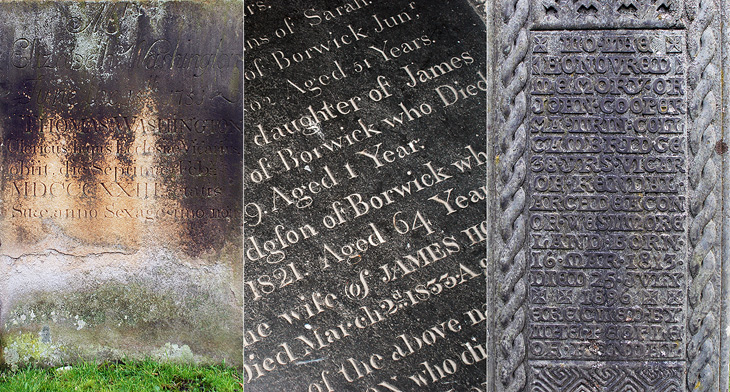
The left and centre ones are from St. Oswald’s church in Warton (my hometown!) and the one on the right is from Kendal’s parish church.

